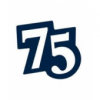
Richard Boynton's heart lies in design, and his head in the ruthless business world. When Richard co-founded strategic brand design company Wink he found a link between his head and heart, and has been happily successful ever since.
Before this story sounds too romanticized for our aspiring designer readers, know that Richard, like everyone in the industry, paid his dues. He began his career working for the Minneapolis-based design firms Design Guys then Haley Johnson Design. After that he was the Design Director for Hunt Adkins. Then in 2000 he opened his own firm along with Scott Thares, and hasn't looked back since.
Richard and Scott's firm, Wink is “a strategic brand design company that aspires to impact both commerce and culture”, and has a client list that includes the likes of Target, MTV, Nike, American Eagle Outfitters, Macy’s and Neiman Marcus. Their work with their exclusive list of clients has received recognition from major industry publications, including the AIGA, New York Art Directors Club, The One Show, Communication Arts, I.D., and more.
Richard recently sat down with Fashion-Schools.org to explain how he got into the industry, his successes, and the critical skills needed to succeed in the business:
What inspired your company to get into branding and design for the fashion industry?
We started doing a lot of work for Target and other retailers, much of which had a fashion edge to it. Which led to our being called by more fashion brands directly. It definitely wasn't something we set out to do.
What type of education did it take to get you where you are today?
Well I graduated with a Bachelor’s in Graphic Design, but most of what I learned obviously came from working for companies that were doing it right. Design can be laying out rack brochures and punching a clock, or it can be more like art. The key, for me, was to be around people who treated it like art, smart and strategic art.
How has your career path progressed over the years?
I think that over time I’ve become a designer with a genuine point-of-view. When I first started my priorities were, what will my boss like. Then it became what will the client like. Then, what's right for the client (regardless if they're ready to like it yet or not). Finally, its arrived at "what's going to be right for the client, right for their customer, but also will have a cultural resonance."
What is your favorite part of working in the fashion/design business?
My favorite part would have to be the solution. Coming up with the big picture idea that transforms a brand in a way that leads their business in a direction that changes everything for them.
What advice would you give to aspiring fashionistas based on your experience working with the industry?
Its hard to reconcile your own personal aesthetic with the current trends, the clients, and consumer wants and needs. You don't need to divorce yourself from it, as then you're just guessing. The trick is keep your point-of-view and find where you're in agreement with whatever the trend is, market is, etc. If you're not personally invested in what you're doing then it'll show, and it won't resonate with anyone. Sometimes that means feeling lost and working more collaboratively than you're used to, but I've found that those are the situations in which you grow the most. And the solutions are far more interesting than anything you'd have come up with yourself.
What schools does your company generally recruit new hires from?
We don't really recruit, although we get resumes and portfolios from all over the country. The breakdown is predominantly art schools, but that takes some careful screening. There are designers who are very good decorators, but can't think conceptually. You can't teach taste, and you can't teach clever. Anyone with those 2 skills in tact get us really excited.
Do you think there is an overall increasing or decreasing need for people in the branding for fashion industry?
I think there's an overall increasing need for good designers, people who can think and not just do. As branding crosses platforms, it requires a more thoughtful and strategic approach. So you have to understand the industry, company, and market you're designing for. Talent is a big part of the mix, but you can't be silo-ed or your usefulness is limited. There are way too many people out there calling themselves a designer these days, to cut through the clutter you've got to demonstrate that you've a lot of tools in your toolbox and the savvy to use them all.
Do you think today's jobs in the fashion-branding industry require more of an artist's touch or business-like ruthlessness?
Early in your career, an artist's touch will get you noticed. But once you get your shot at the big leagues you've got to set limits. Clients will ask you to do work for free, or with the promise of future work, and you've got to hold your ground. If you do it, then everyone starts doing it, soon nobody's getting paid to design. And if you're good at something, you shouldn't be doing it for free.
Which skills do you consider to be most critical for a career in your industry?
Conceptual thinking, and craft. If you've got those things, then you can learn everything else.
What do you think the future of fashion-branding holds?
I think that in the short term, there'll be an endless opportunity to work on smaller brands and do innovative work. In the long term, there'll be fewer large scaled "global" brands to work on, with big budgets and resources. So keep in mind that the smaller things that you cut your teeth on will be the work that gets you in the door later, and more importantly the people you work with and for might be the people who take a job somewhere else and become the client. So its important to always play nice.
Check out more interviews at The Fashion-Schools.org Interview Series.





